Birds in Brindisi, Italy, provide a unique and enriching experience for birdwatchers. From the colorful bee-eaters to the majestic White Storks, there are many species of birds to be found in Brindisi.
The wetlands and coastal areas offer plenty of opportunities to catch a glimpse of a variety of waterfowl, while the wooded hills and mountains are home to a diverse selection of birds of prey.
Whether you are an experienced birder or a novice, there is something for everyone in Brindisi. With its mild climate and abundance of food sources, Brindisi is an ideal destination for birding.
1. Northern Pintail
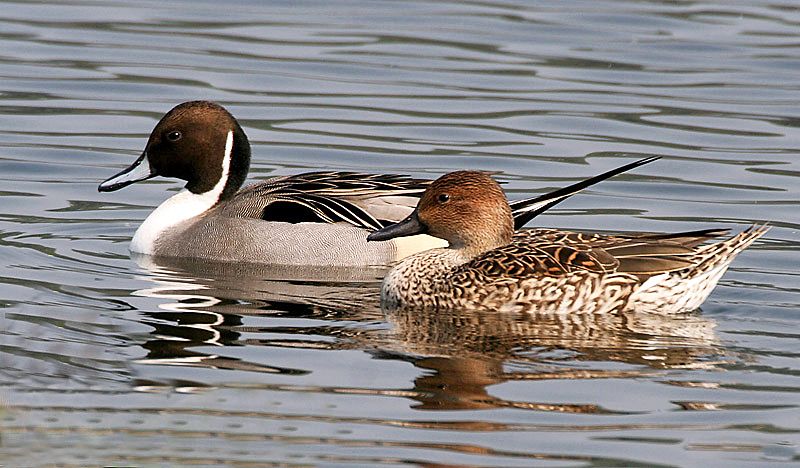
The pintail or northern pintail is a species of duck that can be found throughout the Northern Hemisphere. It is most commonly found in Europe, the Palearctic region, and North America.
During the summer, the pintail breeds in the northern areas of Europe and across the Palearctic and North America. When winter arrives, it migrates to more temperate climates south of its breeding range, which can extend as far south as the equator.
This wide geographic distribution helps to ensure the survival of the species. The pintail is an adaptable species that can thrive in both freshwater and saltwater habitats, which also helps to contribute to its success.
| Kingdom | Animalia |
| Phylum | Chordata |
| Class | Aves |
| Order | Anseriformes |
| Family | Anatidae |
| Genus | Anas |
| Species | A. acuta |
2. Common Pochard
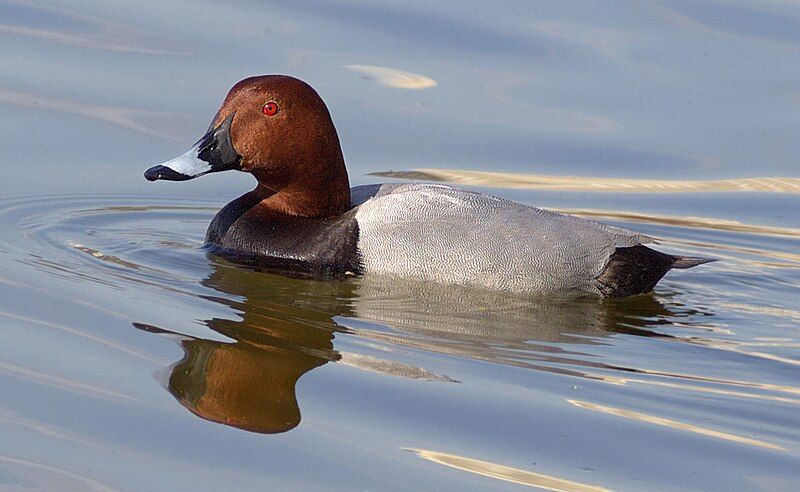
The common pochard is a species of diving duck, typically found in bodies of water across Eurasia.
The scientific name of the common pochard, Aythya ferina, is derived from two sources: Greek aithuia, which is a type of seabird mentioned by ancient authors such as Hesychius and Aristotle, and Latin ferina, which translates to “wild game” and is derived from the Latin ferus, meaning “wild”.
This scientific name is indicative of the wild, untamed nature of the common pochard, as the species is known for its hardy and adaptable nature. They can be found in a variety of environments, including wetlands, lakes, rivers, reservoirs, and even coastal lagoons.
The common pochard has a varied diet, consisting of aquatic invertebrates, seeds, and plants, and they feed both on the surface and underneath the water. They are also known to migrate, and can travel up to long distances to reach their breeding grounds.
| Kingdom | Animalia |
| Phylum | Chordata |
| Class | Aves |
| Order | Anseriformes |
| Family | Anatidae |
| Genus | Aythya |
| Species | A. ferina |
3. Black-Winged Stilt
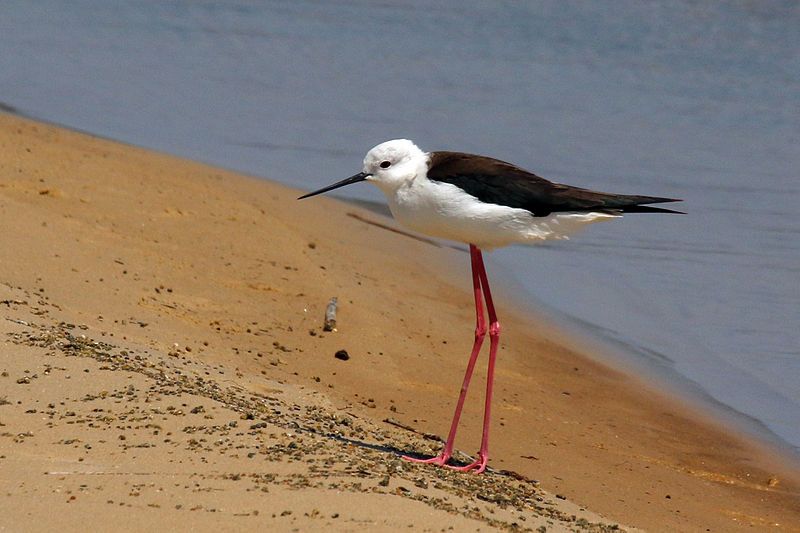
The black-winged stilt is a species of wader, belonging to the family of avocets and stilts. It is a widely distributed species, found in many parts of the world. It is characterized by its very long legs, which are advantageous for reaching food in deeper water.
The scientific name for this species is H. himantopus. This species is considered to be almost cosmopolitan, meaning that it is found in almost all parts of the world. Its wide range of habitats includes tropical and subtropical areas, as well as temperate regions.
This species is also well adapted to living in both freshwater and saltwater habitats. It can often be seen in wetlands, marshes, lakes, and other shallow bodies of water.
The black-winged stilt is an important species, as it serves as both a food source and as a part of the ecosystem.
| Kingdom | Animalia |
| Phylum | Chordata |
| Class | Aves |
| Order | Charadriiformes |
| Family | Recurvirostridae |
| Genus | Himantopus |
| Species | H. himantopus |
4. Ferruginous Duck
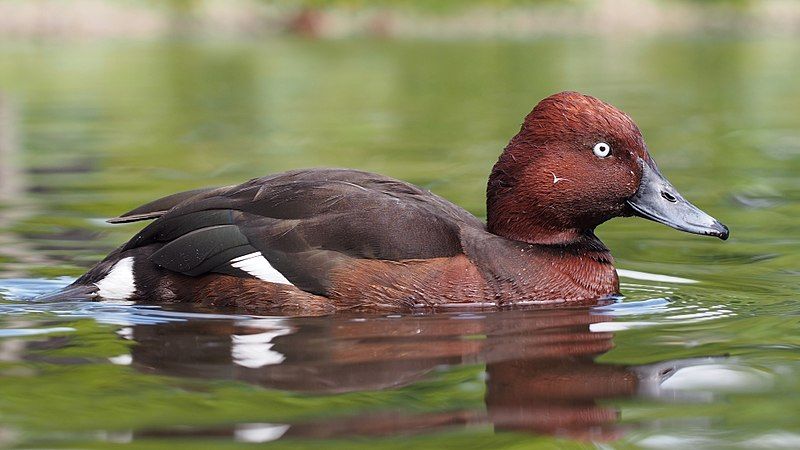
The Ferruginous Duck, also known as the Ferruginous Pochard, Common White-eye or White-eyed Pochard, is a medium-sized diving duck that is found across Europe and Siberia. This species has a scientific name derived from the ancient Greek language.
The first part of its scientific name, Aithuia, is a reference to an unidentified seabird mentioned by classical authors such as Hesychius and Aristotle. The second part of the name, Nyrok, is the Russian word for duck, referring to the native range of this species.
The Ferruginous Duck is a distinctive species with a range of notable features. It has a large body that is largely brown in color, with a white head and neck and a black mask across its eyes. Its wings are a darker shade of brown, with white edges to each feather.
It has a long, pointed bill, and its legs and feet are a yellowish or greenish color. In terms of behavior, the Ferruginous Duck is a strong swimmer and often dives beneath the surface of the water in search of food.
It feeds on small fish, aquatic insects, and other aquatic invertebrates. This species is also quite sociable, often forming large flocks in its native habitats. The Ferruginous Duck is considered to be a vulnerable species due to its declining population.
This is mainly due to habitat loss caused by human activities such as wetland drainage and pollution. Conservation efforts are underway to help protect this species and its habitat.
| Kingdom | Animalia |
| Phylum | Chordata |
| Class | Aves |
| Order | Anseriformes |
| Family | Anatidae |
| Genus | Aythya |
| Species | A. nyroca |
5. Gadwall
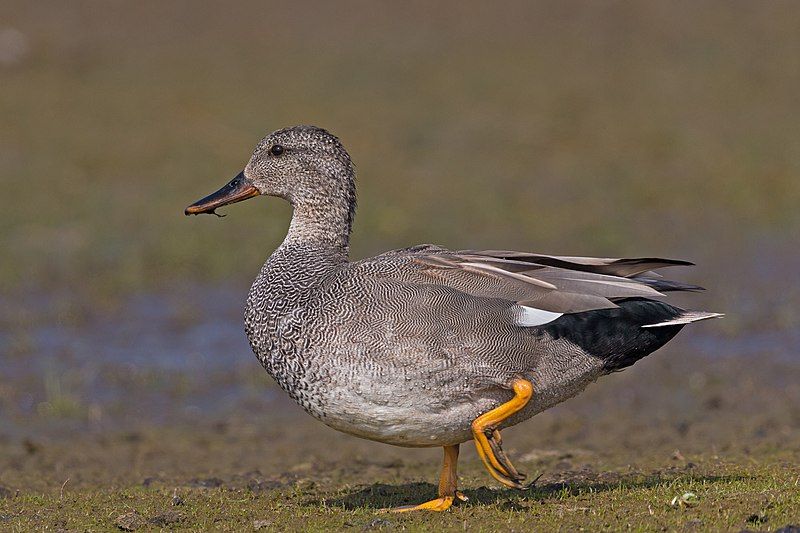
The gadwall is a species of dabbling duck found in the family Anatidae. It is a common and widespread bird found in many parts of the world. The gadwall is a medium-sized duck, typically measuring between 39 and 43 cm in length.
It has a grey and white plumage, with brownish-grey upperparts and white underparts. The male gadwall has a light grey head with a white eye patch, while the female has a brown head. Males also have a white patch on their wings and a black tail that is tipped in white.
Gadwall usually inhabit shallow wetlands, such as marshes, lakes, and ponds. They feed mainly on aquatic plants and insects, as well as some grains and seeds. In the winter, they may venture further inland, where they can feed on agricultural grains.
Gadwall are monogamous, forming long-term pair bonds with one mate. They typically breed in the northern hemisphere, laying up to nine eggs in a single clutch. Gadwall are not considered threatened species, as their population is estimated to be in the millions.
In fact, their numbers may be increasing due to their adaptability to human disturbance. Despite this, they are still threatened by habitat loss due to agricultural and urban development. Conservation efforts are underway to protect these ducks and their habitats.
| Kingdom | Animalia |
| Phylum | Chordata |
| Class | Aves |
| Order | Anseriformes |
| Family | Anatidae |
| Genus | Mareca |
| Species | M. strepera |
6. Mallard
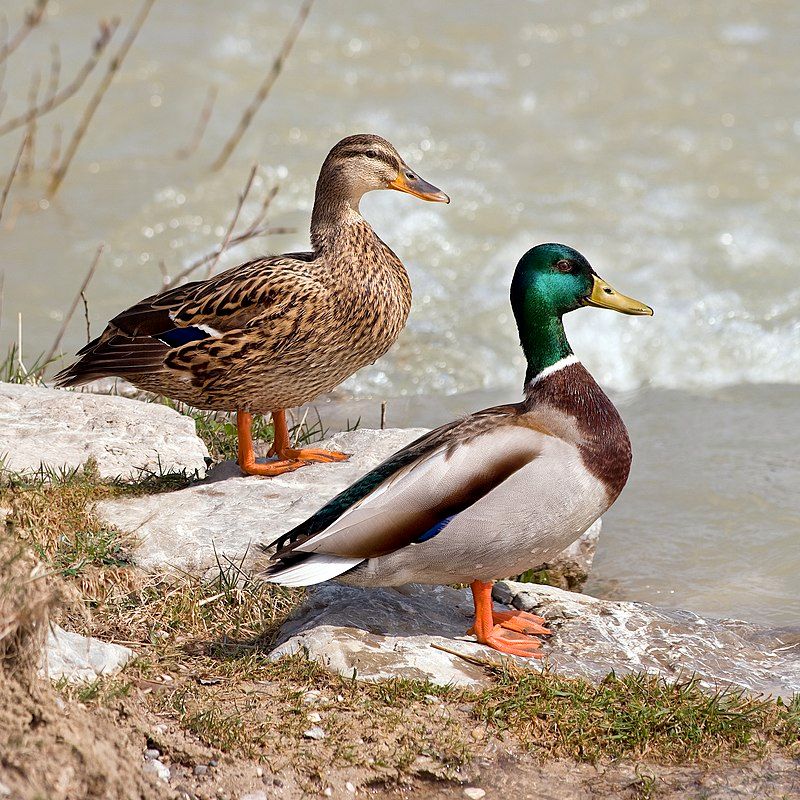
The mallard or wild duck is a common species of duck found in many parts of the world. It is a dabbling duck, meaning that it feeds mainly on aquatic plants and insects found in shallow waters.
This species breeds in many temperate and subtropical areas, such as the Americas, Eurasia, and North Africa.
In addition, it has been introduced to several other areas, such as New Zealand, Australia, Peru, Brazil, Uruguay, Argentina, Chile, Colombia, the Falkland Islands, and South Africa. Mallards are a highly adaptable species and are found in a wide range of habitats, from wetlands and lakes to rivers and even urban areas.
They are highly social birds and can often be seen in large flocks. Their diet consists mainly of aquatic plants, insects, and mollusks, which they forage for by dabbling in shallow waters. Mallards are also a popular game bird, and have been hunted for centuries.
They are valued for their delicious meat, which is why they are a popular target for hunters.
Their population is currently stable, although they are still vulnerable to human activities such as hunting and habitat destruction. The mallard or wild duck is a widespread species found in many parts of the world.
It is a highly adaptable species that can be found in a wide variety of habitats, from wetlands to urban areas. It is also a popular game bird, and its population is currently stable.
| Kingdom | Animalia |
| Phylum | Chordata |
| Class | Aves |
| Order | Anseriformes |
| Family | Anatidae |
| Genus | Anas |
| Species | A. platyrhynchos |
7. Little Egret
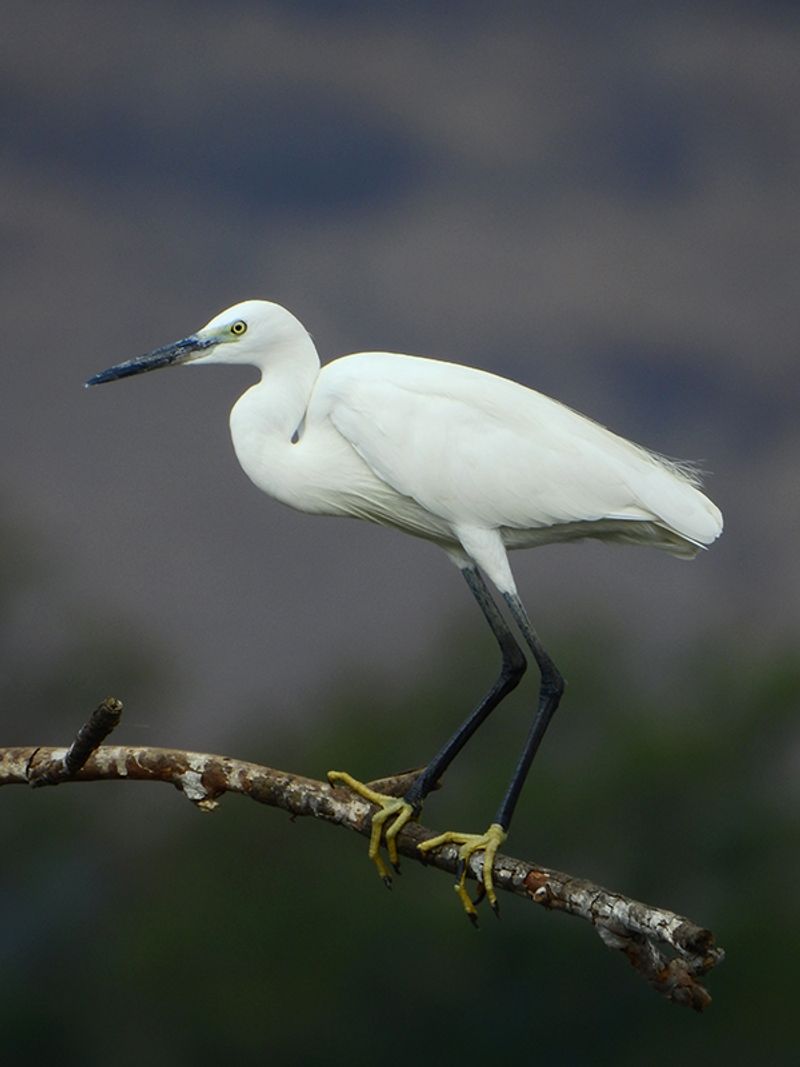
The little egret is a species of heron belonging to the Ardeidae family. It is a small white bird, with a long slender black beak, and black legs. In the western race of the species, the feet are yellow.
As an aquatic bird, it feeds in shallow water and also on land, where it feeds on a variety of small creatures. It is a graceful bird, often found gliding over the water, and it is a sight to behold.
They are found in many parts of the world, from Europe to the subcontinent, and even in parts of the United States. Its slender frame and white plumage make for a beautiful sight when seen in its natural habitat.
The little egret is a species that is both beautiful and fascinating to observe.
| Kingdom | Animalia |
| Phylum | Chordata |
| Class | Aves |
| Order | Pelecaniformes |
| Family | Ardeidae |
| Genus | Egretta |
| Species | E. garzetta |
8. Greater Flamingo
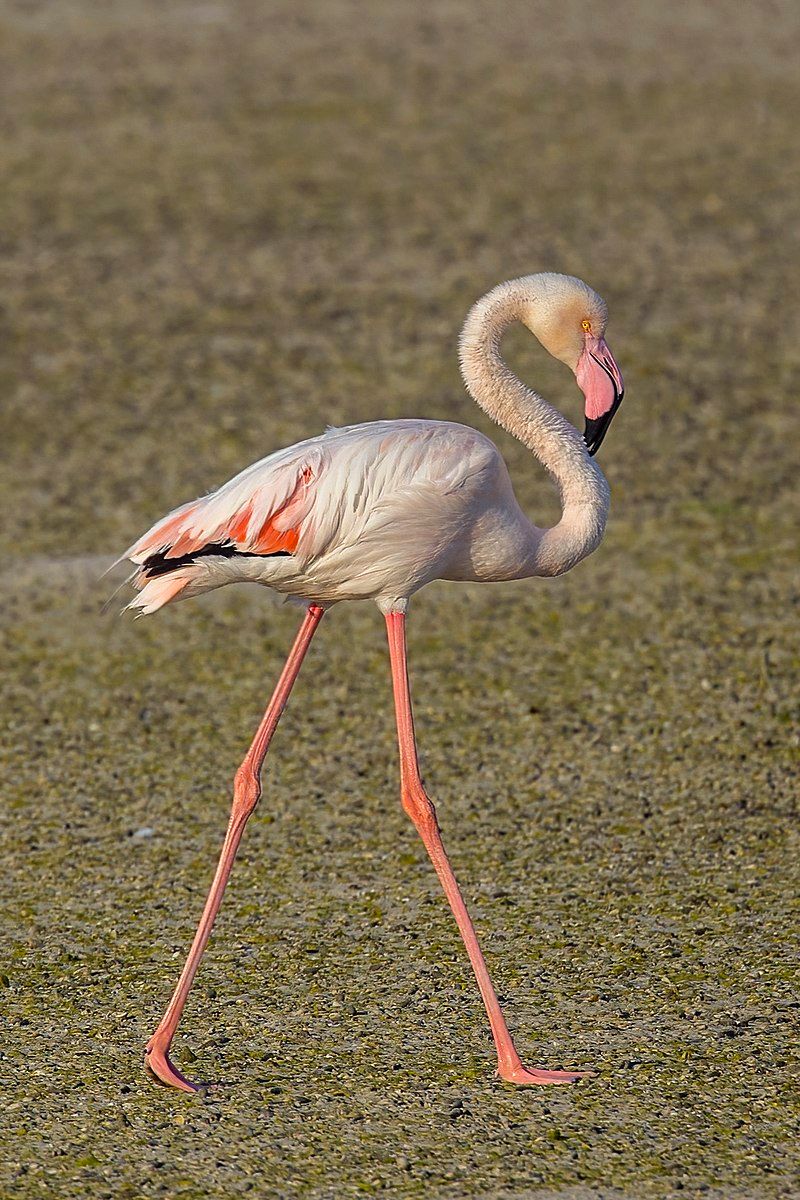
The greater flamingo is a species of flamingo that is found in many parts of the world. It is the most widespread and largest species of the flamingo family and can be found in many areas of the Old World.
In Africa, greater flamingos are found in Northern and Sub-Saharan regions, while in the Indian Subcontinent, they inhabit areas such as the Middle East, the Levant, the Persian Gulf, the Gulf of Aden, the Red Sea, and the Mediterranean countries of Southern Europe.
The greater flamingo is a large bird, typically growing to around four feet tall and having a wingspan of up to five feet. It is mainly pink in color, with a white belly and black and yellow beak.
Its diet consists of algae, crustaceans, mollusks, insects, and aquatic vegetation.
They feed in large groups, with their heads submerged in the water and their long necks bent in a ‘S’ shape. The greater flamingo is typically found in shallow lakes, lagoons, estuaries, and other wetland areas.
They are highly social birds, living in large colonies and often gathering in flocks of thousands of individuals.
They are also known to migrate, flying thousands of miles in search of food and better living conditions. As an important part of the ecosystem, greater flamingos help to keep wetlands clean by consuming large amounts of algae, which can cause blooms that can choke out other aquatic life.
They are also important as a food source for other species, such as fish, birds, and smaller animals. Due to this, greater flamingos are an important species to conserve and protect.
| Kingdom | Animalia |
| Phylum | Chordata |
| Class | Aves |
| Order | Phoenicopteriformes |
| Family | Phoenicopteridae |
| Genus | Phoenicopterus |
| Species | P. roseus |
9. Great Crested Grebe
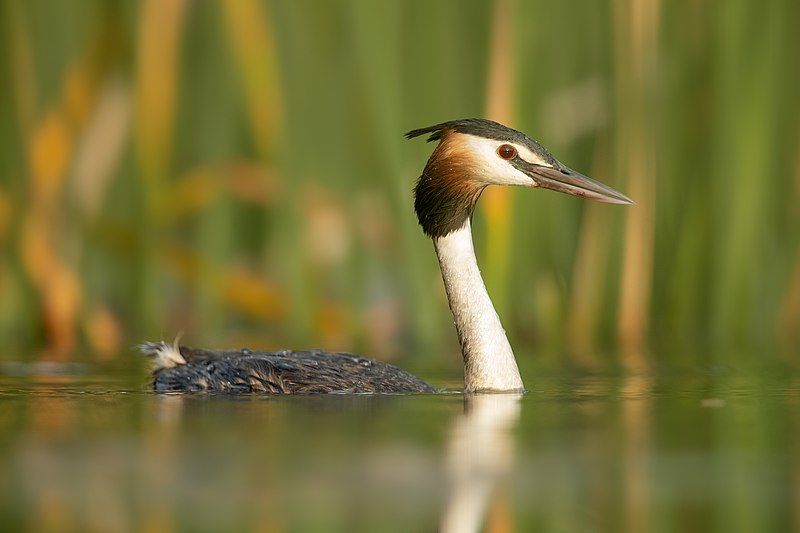
The great crested grebe is a water bird that is part of the grebe family. It is found in freshwater lakes and ponds across Europe and parts of Asia. It has distinctive physical features, including a long neck, an orange-red beak, and a black cap on its head.
The most notable characteristic of the great crested grebe is its mating display. Every year, during the breeding season, the male and female perform a series of rituals to attract a mate. This includes strutting, dancing, and swimming in unison.
The two birds will also build a nest together, which they will use to protect and incubate their eggs. The great crested grebe’s mating display is considered one of the most elaborate of any bird species.
It is a beautiful sight to behold, and has been the subject of many scientific studies.
| Kingdom | Animalia |
| Phylum | Chordata |
| Class | Aves |
| Order | Podicipediformes |
| Family | Podicipedidae |
| Genus | Podiceps |
| Species | P. cristatus |
10. Northern Shoveler
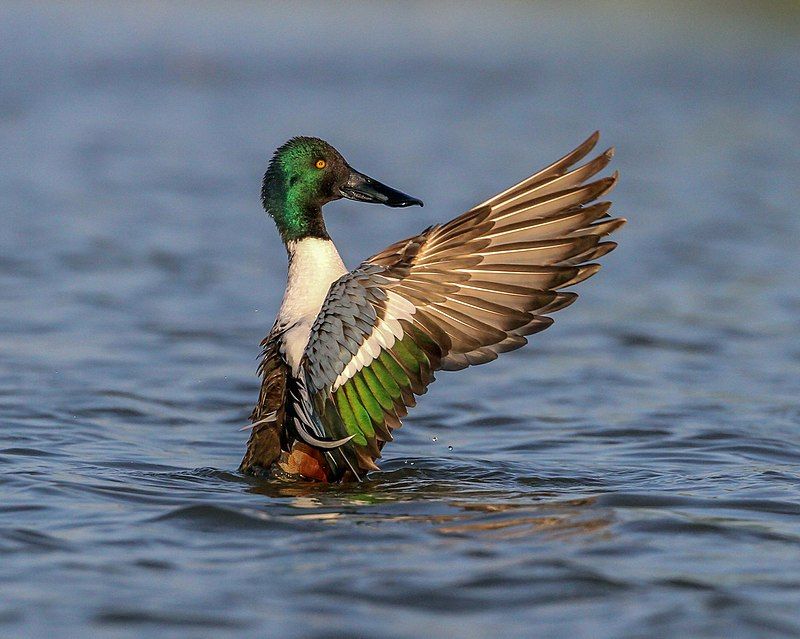
The northern shoveler, which is known as the shoveler in Britain, is a very common and widespread duck. It breeds during the summer in northern parts of Europe, as well as across the Palearctic region and across most of North America.
During winter, the shoveler migrates to southern Europe, the Indian subcontinent, Southeast Asia, Central America, the Caribbean, and northern South America.
This wide range of breeding and wintering grounds make the northern shoveler one of the most widespread ducks in the world. Its ability to adapt to different climates makes it an especially resilient species, allowing it to thrive in a range of habitats.
| Kingdom | Animalia |
| Phylum | Chordata |
| Class | Aves |
| Order | Anseriformes |
| Family | Anatidae |
| Genus | Spatula |
| Species | S. clypeata |
11. Eurasian Teal
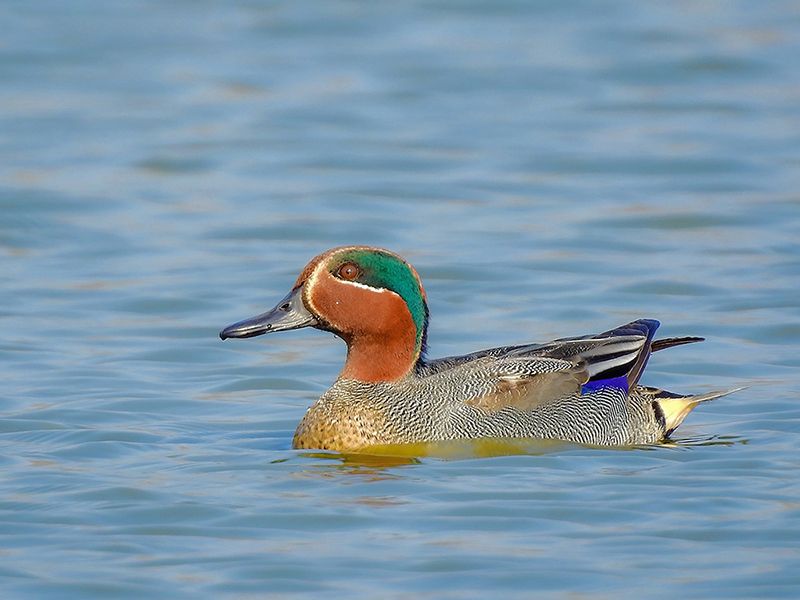
The Eurasian teal, also known as the common teal or Eurasian green-winged teal, is a type of duck commonly found across temperate Eurosiberia. This particular species of duck is known for its migratory behavior, which involves moving south in the winter months.
The Eurasian teal is the only one of these small dabbling ducks in much of its range, thus it is often referred to simply as the “teal” due to its abundance in certain areas.
The Eurasian teal is a small species of duck, usually having a wingspan of approximately 20 inches and a body length of around 15 inches. It is easily recognizable by its brownish-gray feathers with green and purple specks and a white stripe along the side of its face.
This type of duck typically feeds on aquatic plants and invertebrates, as well as insects, small fish, and other small animals. The Eurasian teal is an important species for many reasons.
It is often used as a food source in some parts of the world, and its feathers are also highly valued for their use in making clothing and other items.
Additionally, the Eurasian teal is a key part of the ecosystem, providing food and shelter for many other species of animals and plants.
The ducks also play an important role in helping to spread seeds, as they often consume the plants and then disperse the seeds through their droppings.
Overall, the Eurasian teal is an important species that plays an integral role in the ecosystem and is highly valued for its use in food and clothing.
Its migratory behavior helps to spread its population and ensure its survival, and it is an interesting species to observe in its natural habitat.
| Kingdom | Animalia |
| Phylum | Chordata |
| Class | Aves |
| Order | Anseriformes |
| Family | Anatidae |
| Genus | Anas |
| Species | A. crecca |
12. Red-Necked Grebe
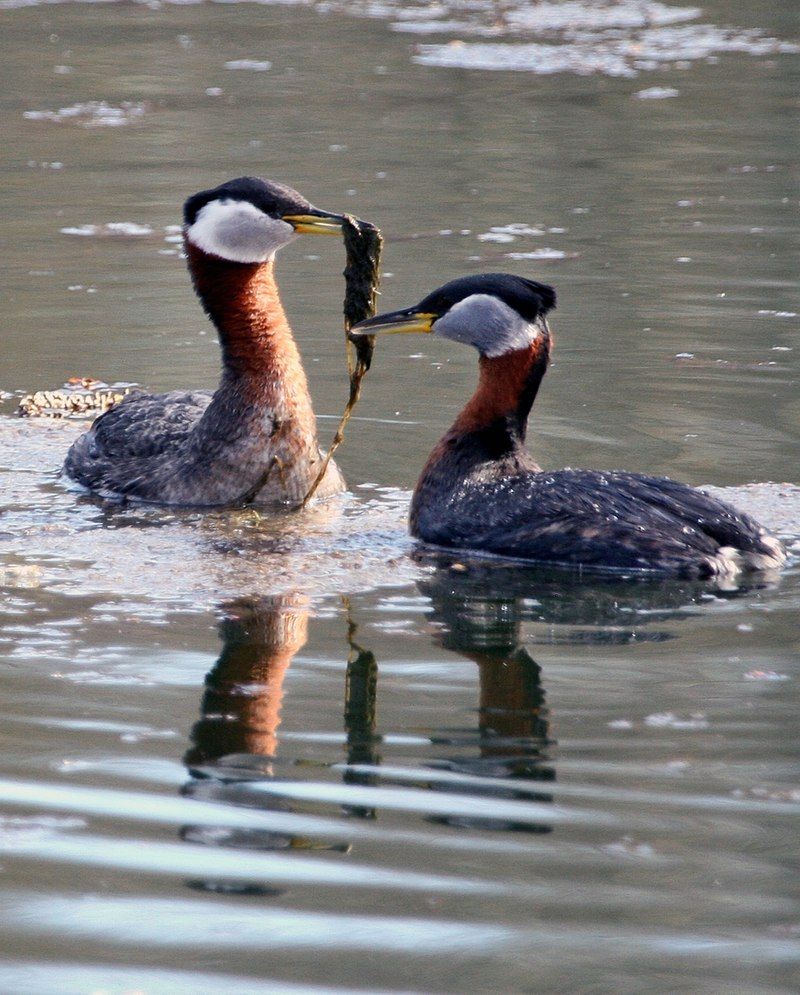
The red-necked grebe is a migratory bird that can be found in temperate regions of the northern hemisphere. This species of bird has a wide range, although its wintering habitat is typically limited to the waters near the coastlines of oceans and some large lakes.
These waters are usually calm and offer the Grebes a peaceful, safe place to winter. The red-necked grebe is a small, attractive bird with a reddish-brown neck and head. Its body is typically black with white and grey patches.
The grebe has a unique style of swimming, as its legs are set far back on its body, allowing it to dive beneath the surface of the water. The red-necked grebe feeds by diving beneath the water’s surface and catching small fish and aquatic insects.
During the breeding season, it nests among aquatic plants near the shoreline.
In the winter, these birds migrate to warmer climates where they can find food more easily. The red-necked grebe is an important species in the environment, as it helps to maintain a healthy aquatic ecosystem.
Without it, the balance of the aquatic habitat could be disrupted, leading to the decline of other species. The red-necked grebe is also a popular bird for birdwatchers and photographers, as it can be easily spotted near the shoreline.
| Kingdom | Animalia |
| Phylum | Chordata |
| Class | Aves |
| Order | Podicipediformes |
| Family | Podicipedidae |
| Genus | Podiceps |
| Species | P. grisegena |
13. Black-Crowned Night Heron
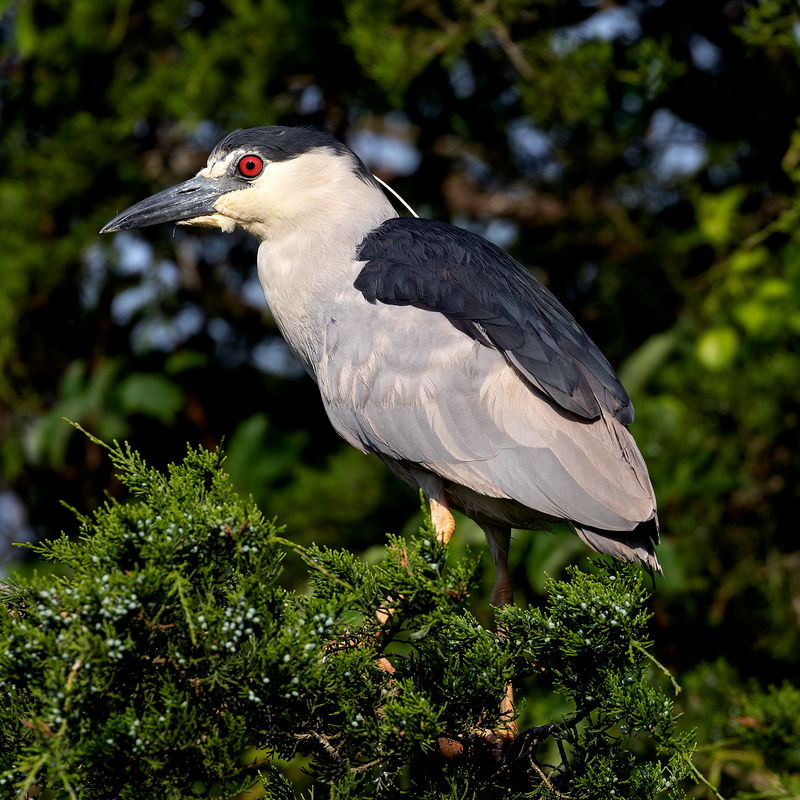
The black-crowned night-heron, also known as the black-capped night-heron, is a medium-sized heron found in many parts of the world. It is sometimes referred to simply as the night-heron in Eurasia.
This heron species is found in Europe, Asia, North America, and South America. The black-crowned night-heron is a fairly large bird, with a length of up to 55 cm and a wingspan of up to 1 m. Its plumage is mainly brown and grey, with a black crown and white cheeks.
It has yellow eyes and a black bill. Its legs are yellow-green and its feet are mainly black. This species feeds mainly on small fish, frogs, insects, and crustaceans. It is an opportunistic feeder, meaning it will take advantage of whatever food is available.
It can often be seen along the edges of rivers, lakes, and marshes, and in other areas with shallow water. The black-crowned night-heron is a solitary bird, usually found alone or in pairs. It is a relatively shy bird, but can be quite vocal when disturbed.
During the breeding season, the birds will form large colonies in trees or on the ground. The female will lay up to seven eggs in a shallow nest. The black-crowned night-heron is a widespread species, with a global population estimated to be between 1 and 10 million.
It is not considered to be threatened or endangered. This species is protected in many countries, and its population is generally stable.
| Kingdom | Animalia |
| Phylum | Chordata |
| Class | Aves |
| Order | Pelecaniformes |
| Family | Ardeidae |
| Genus | Nycticorax |
| Species | N. nycticorax |
14. Glossy Ibis
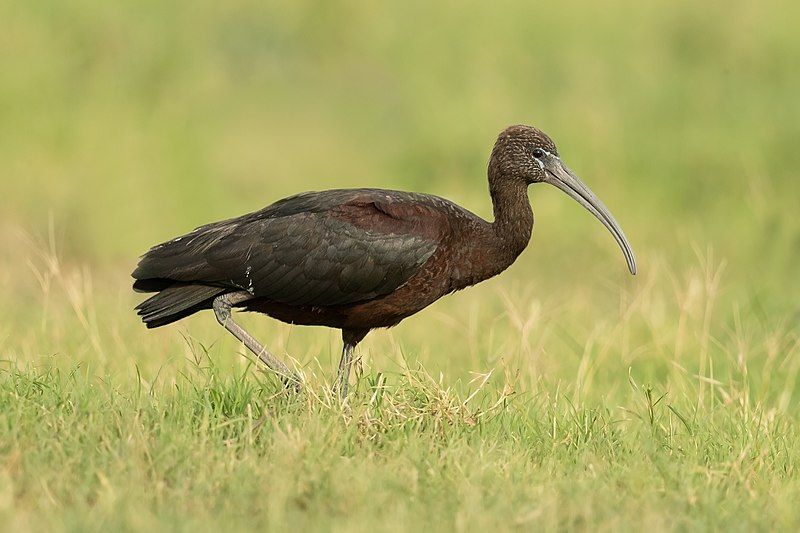
The glossy ibis is a species of waterbird that belongs to the order Pelecaniformes and the family Threskiornithidae. It is a member of the ibis and spoonbill family, and the scientific name of the species is derived from the Ancient Greek plegados and Latin term falcis.
Both terms refer to the distinctive curved shape of the bird’s bill, which resembles a sickle. This curved shape helps the glossy ibis to feed in shallow waters, as it can quickly scoop up small prey.
The species also has long legs, which enable it to wade in the shallow waters more easily. The glossy ibis has a glossy black and chestnut plumage, and it can reach up to 24 inches in length.
The species is mainly found in the wetlands of North America, South America, Europe, and Africa. It is also a migratory species, and it can be seen in different parts of the world during different times of the year.
| Kingdom | Animalia |
| Phylum | Chordata |
| Class | Aves |
| Order | Pelecaniformes |
| Family | Threskiornithidae |
| Genus | Plegadis |
| Species | P. falcinellus |
15. Red-Crested Pochard
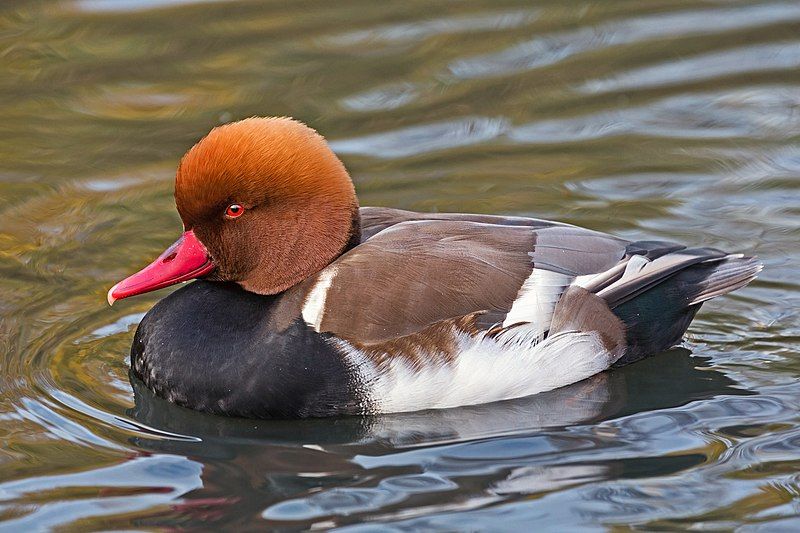
The red-crested pochard is a large diving duck that is found in many parts of the world. Its scientific name, Netta rufina, is derived from Greek and Latin words. The Greek word Netta translates to “duck”, while the Latin word rufina translates to “golden-red”.
This scientific name accurately reflects the physical appearance of the red-crested pochard, which is characterized by its bright red crest and golden-red feathers. As a large diving duck, the red-crested pochard is often seen in shallow bodies of water where it dives for food.
Due to its beauty and abundance of food sources, the red-crested pochard is a common species of duck among birdwatchers and other animal enthusiasts.
| Kingdom | Animalia |
| Phylum | Chordata |
| Class | Aves |
| Order | Anseriformes |
| Family | Anatidae |
| Genus | Netta |
| Species | N. rufina |
16. Common Crane
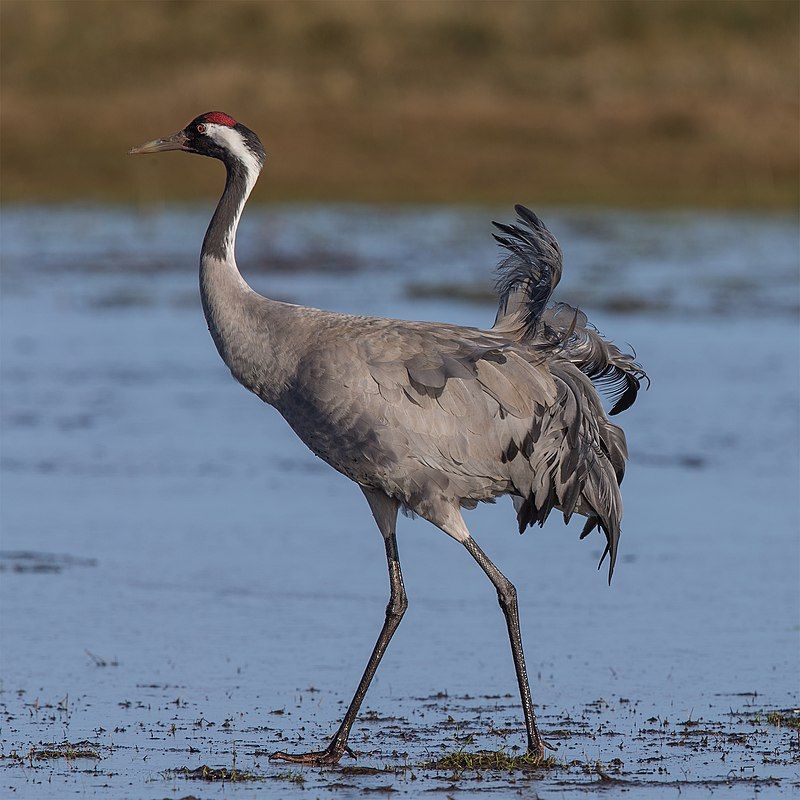
The Common Crane is a species of bird belonging to the family Gruidae, more commonly known as cranes.
It is found widely throughout Europe, and is one of two species of crane that are commonly seen in the region – with the other species being the Demoiselle Crane and the Siberian Crane.
The Common Crane is a medium-sized species, and is easily distinguished from other crane species due to its distinctive features.
They have a grey-brown colouration on their body, with a white patch of feathers on their wings, and a long neck and beak that can be used to reach food.
The Common Crane is a widespread species and is found in a variety of habitats throughout Europe, from wetlands and meadows to grasslands and even agricultural areas.
They are known to feed on small insects, amphibians, reptiles, and some plant material, and often form large flocks to forage. The Common Crane is a social species and is known to form small groups and large flocks for protection and to make mating easier.
They are also known to form large communal roosts during the winter months, which can be seen in areas such as Northern France and Germany. The Common Crane is a threatened species due to habitat destruction and illegal hunting, and is listed as vulnerable on the IUCN Red List.
| Kingdom | Animalia |
| Phylum | Chordata |
| Class | Aves |
| Order | Gruiformes |
| Family | Gruidae |
| Genus | Grus |
| Species | G. grus |
17. Cattle Egret
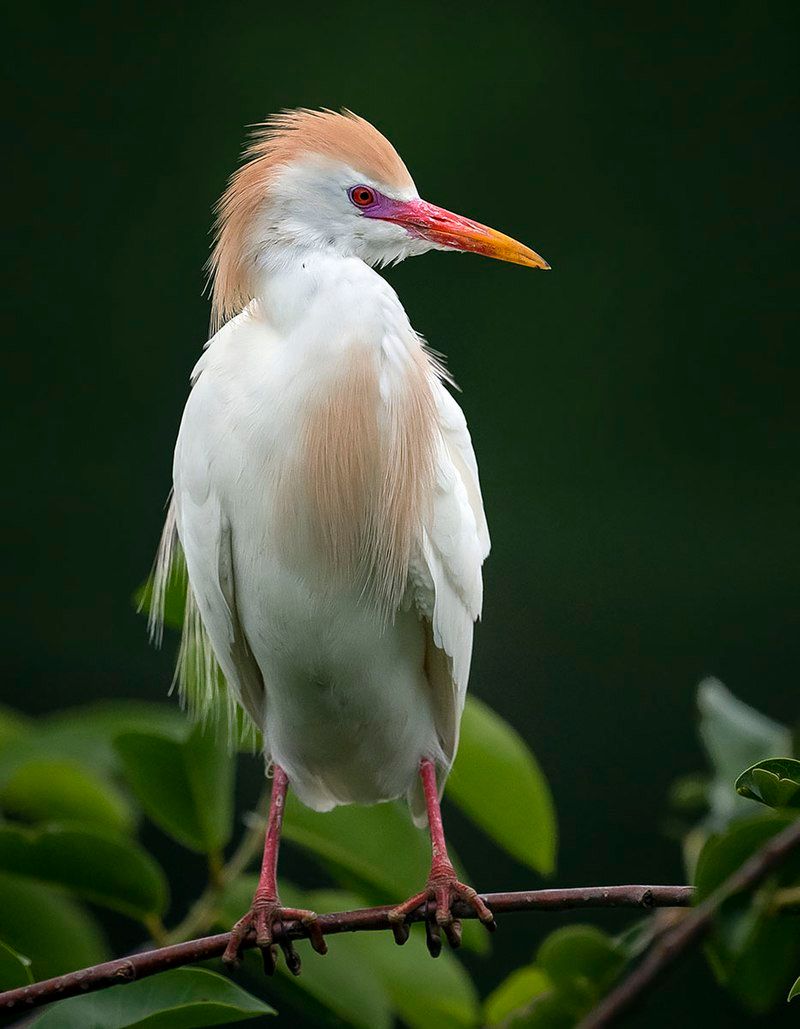
The cattle egret is a species of heron found in many different regions across the globe. It is native to tropical, subtropical, and warm-temperate climates, and is the only member of its genus, Bubulcus.
Some experts believe that the cattle egret can be split into two distinct species, the western cattle egret and the eastern cattle egret. These two species are very similar in appearance, but there are some subtle differences in their behavior and habitat preferences.
The western cattle egret can be found in the United States, Mexico, and Central America, while the eastern cattle egret is found mostly in Asia, Australia, and parts of Africa. Both species are very social birds and often form large colonies near ponds and other bodies of water.
They feed primarily on insects and small fish, and are often seen near livestock, where they take advantage of the animals’ movements to flush out prey.
| Kingdom | Animalia |
| Phylum | Chordata |
| Class | Aves |
| Order | Pelecaniformes |
| Family | Ardeidae |
| Genus | Bubulcus |
| Species | B. ibis |
18. Great Egret
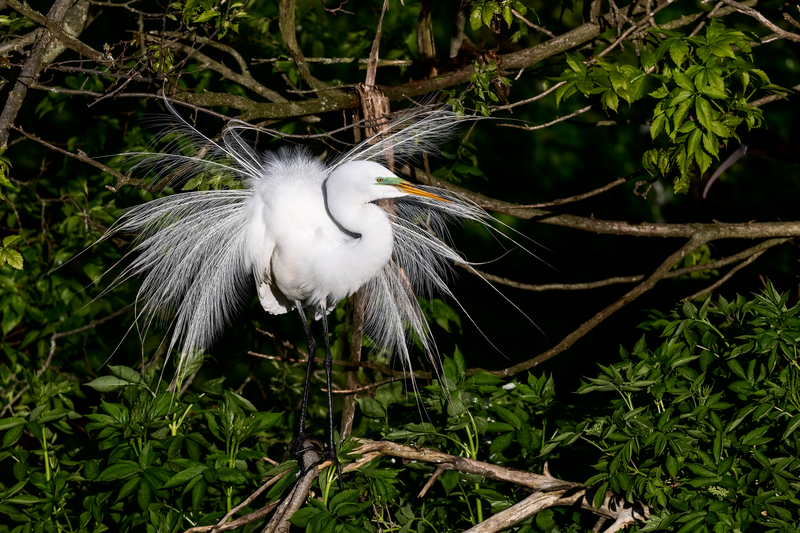
The great egret is a large bird that is found in various parts of the world. It has four distinct subspecies, which are found in Asia, Africa, the Americas, and southern Europe. The bird is also known as the common egret, large egret, great white egret, or great white heron.
Recently, the great egret is starting to spread to more northern areas of Europe, showing that its range is increasing and that it is adapting to new environments. The great egret is a beautiful bird, with a white plumage and long legs.
Its long neck and pointed bill make it a distinctive species. It also has a long wingspan, which can reach up to 1.6 meters. The great egret is a wading bird, which means it typically forages in shallow water for its food.
It feeds on small fish, amphibians, reptiles, and insects. The great egret is an important part of many ecosystems, as it helps to keep the population of its prey species in check. It also helps to control insect populations, which can be beneficial for humans.
In addition, it is a valuable part of local economies, as it is a popular target for birdwatchers and nature photographers. The great egret is a species of least concern according to the International Union for Conservation of Nature.
However, due to its popularity, it is still considered vulnerable to habitat loss and hunting in some areas. Conservation efforts are important to ensure that this species is able to continue to thrive in its various habitats around the world.
| Kingdom | Animalia |
| Phylum | Chordata |
| Class | Aves |
| Order | Pelecaniformes |
| Family | Ardeidae |
| Genus | Ardea |
| Species | A. alba |
19. Lesser Flamingo
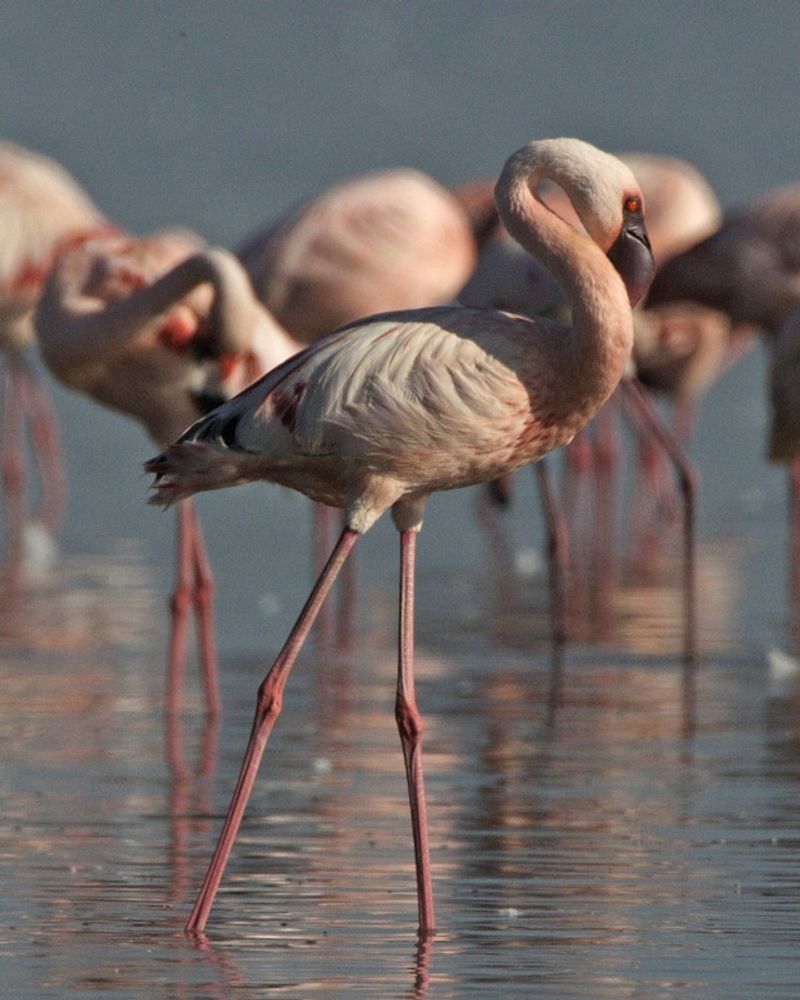
The lesser flamingo is a species of flamingo that is native to sub-Saharan Africa and western India. It is the most abundant of the flamingo species and is easily recognizable by its pinkish-white plumage.
The birds feed on small shrimp and algae, filtering out the food with their specialized beaks. They typically inhabit shallow, alkaline lakes and lagoons.
Although the species is generally confined to the areas mentioned above, occasionally they are reported in more northern regions. These sightings, however, are typically considered to be the result of vagrancy, or wandering away from their normal habitats.
| Kingdom | Animalia |
| Phylum | Chordata |
| Class | Aves |
| Order | Phoenicopteriformes |
| Family | Phoenicopteridae |
| Genus | Phoeniconaias |
| Species | P. minor |
20. Squacco Heron
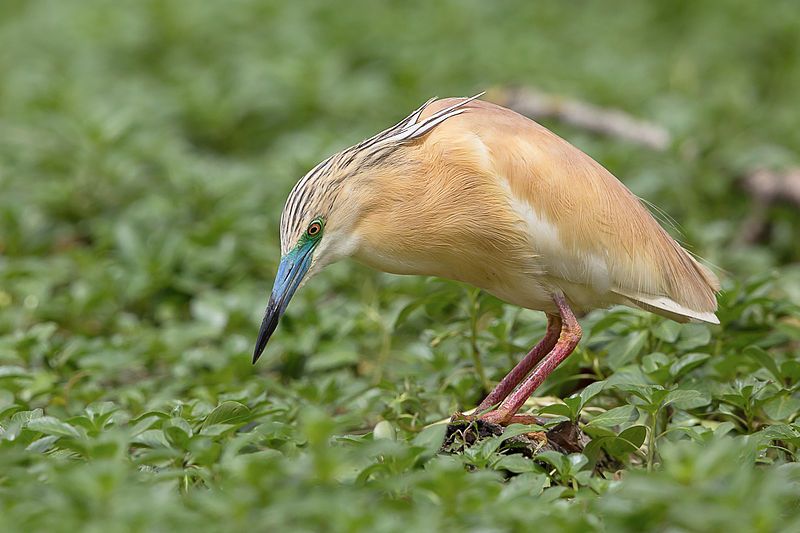
The Squacco Heron is a small species of heron that can be found throughout parts of the Old World. It is typically 44-47 cm in length, with a body that is 20-23 cm long and a wingspan of 80-92 cm. It is most common in southern Europe and the Greater Middle East, where it breeds.
This heron prefers to inhabit wetlands, marshes, and the banks of streams and rivers. It feeds mainly on amphibians, fish, and insects, which it captures with its long, pointed bill.
Its plumage is mostly grey and brown, with white patches on its wings and a white line along its neck. It also has a distinctive black cap on its head. The Squacco Heron is a relatively common species and is not considered to be threatened at this time.
| Kingdom | Animalia |
| Phylum | Chordata |
| Class | Aves |
| Order | Pelecaniformes |
| Family | Ardeidae |
| Genus | Ardeola |
| Species | A. ralloides |
21. Baikal Teal
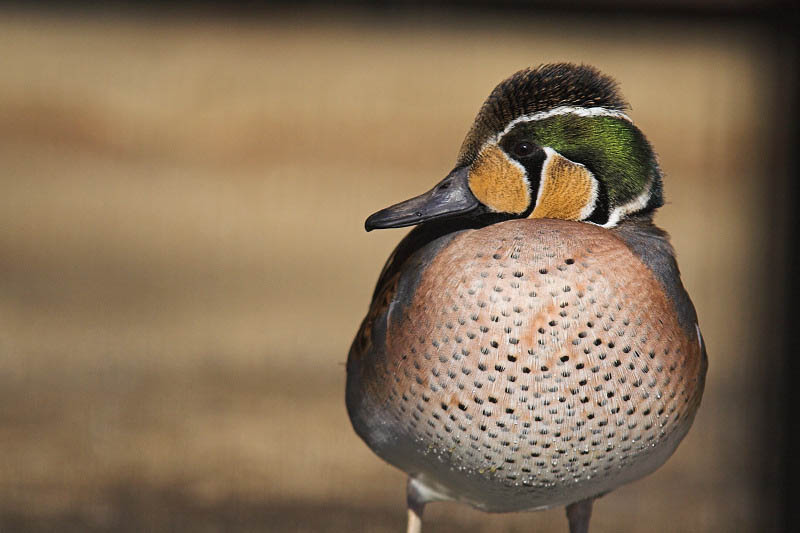
Source: Wikipedia
The Baikal teal is a species of dabbling duck that is native to eastern Russia, and is also known as the bimaculate duck or squawk duck. It is a relatively small duck, measuring between 17 and 20 inches in length.
The Baikal teal is mostly brown in color, with a white stripe along its sides, and two white spots on its back. During the summer months, the Baikal teal breeds in eastern Russia, but it migrates south during the winter months to spend the colder months in East Asia.
It inhabits ponds, lakes, and wetlands, where it feeds on aquatic vegetation, seeds, and insects.
The Baikal teal is considered to be a species of least concern by the International Union for Conservation of Nature, as its population is stable and is not in danger of becoming threatened.
| Kingdom | Animalia |
| Phylum | Chordata |
| Class | Aves |
| Order | Anseriformes |
| Family | Anatidae |
| Genus | Sibirionetta |
| Species | S. formosa |
22. Red-Breasted Goose
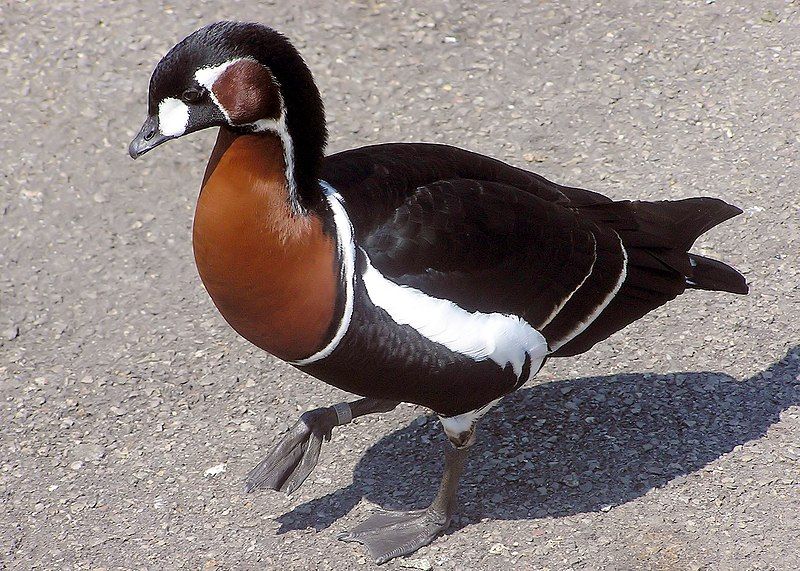
The red-breasted goose is a species of goose that is found in Eurasia and is part of the genus Branta. It is a brightly marked species, with distinctive red feathers on its chest.
The International Union for Conservation of Nature (IUCN) has currently classified the red-breasted goose as vulnerable.
This means that the species is facing a high risk of extinction in the wild due to several threats, such as habitat loss, hunting and poaching, and other human activities. The red-breasted goose is an important species for many reasons.
It serves an important role in its natural environment, being a keystone species. It is also a popular game species, which brings economic and cultural benefits to many people.
The red-breasted goose is an iconic species, and its protection is important for both ecological and cultural reasons. Conservation efforts need to be taken to protect this species and its habitat.
These efforts should include habitat protection, reducing threats such as hunting and poaching, and establishing protected areas. It is also important to raise awareness of the importance of this species and the threats it faces.
| Kingdom | Animalia |
| Phylum | Chordata |
| Class | Aves |
| Order | Anseriformes |
| Family | Anatidae |
| Genus | Branta |
| Species | B. ruficollis |
23. White-Headed Duck
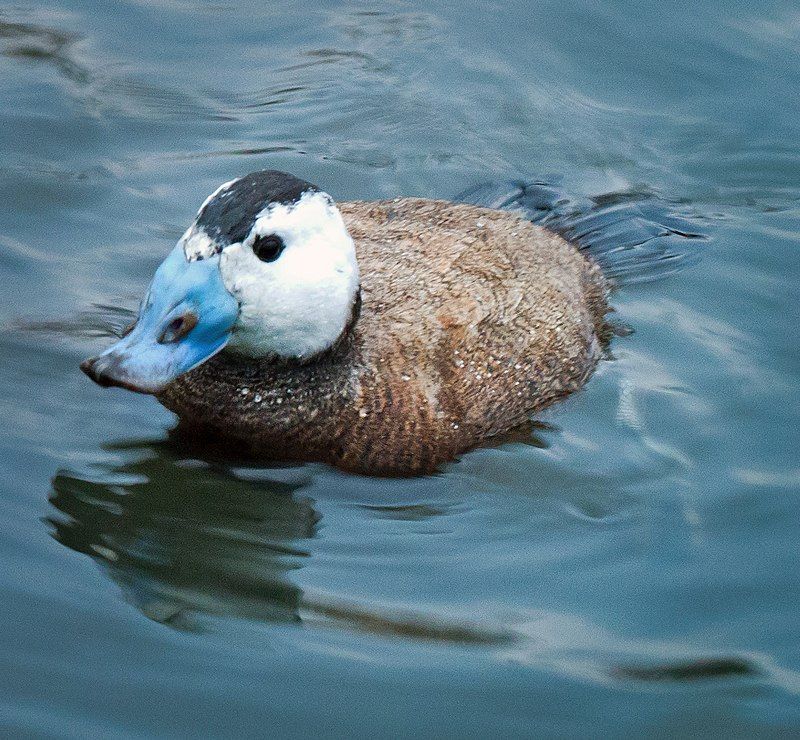
The white-headed duck is a small diving duck, approximately 45 cm in length. It possesses many distinct physical characteristics that make it easily identifiable. The male has a white head with a black crown, a blue bill, and a reddish-grey plumage.
The female is more subdued in color, with a dark bill and duller plumage. This species of duck prefers to inhabit lakes with open water and dense vegetation around the edges. This vegetation provides shelter and food for the duck, making it an ideal habitat.
The white-headed duck also uses the dense vegetation to hide from potential predators.
The vegetation also provides a safe place for the duck to nest and raise its young. The white-headed duck plays an important role in local ecosystems, as it is a top predator and a food source for other animals.
It is also an important indicator species, as its presence is an indicator of a healthy aquatic environment. Unfortunately, the white-headed duck is at risk of extinction due to the destruction of its habitat and the introduction of predators.
Conservation measures are needed to ensure the survival of this species.
| Kingdom | Animalia |
| Phylum | Chordata |
| Class | Aves |
| Order | Anseriformes |
| Family | Anatidae |
| Genus | Oxyura |
| Species | O. leucocephala |
24. Eurasian Oystercatcher
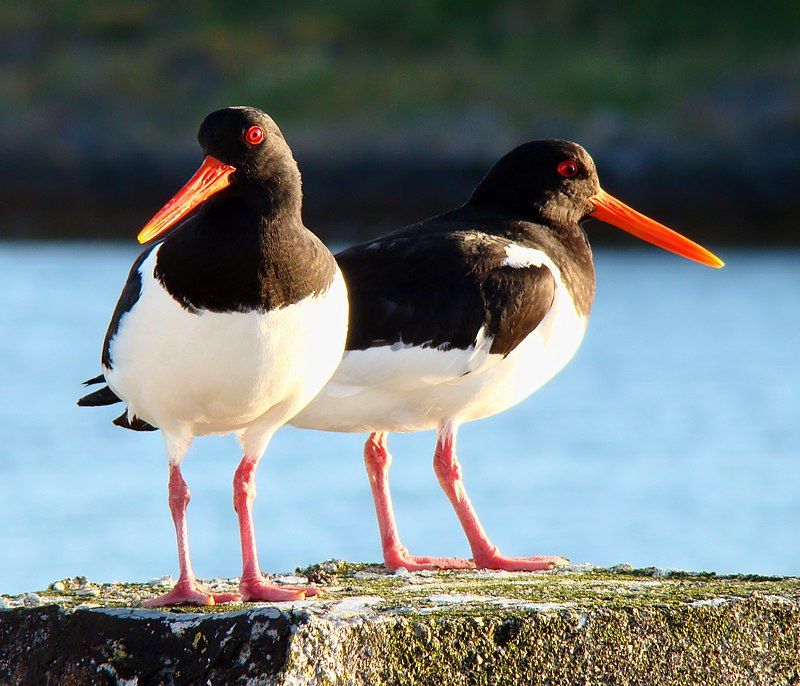
The Eurasian oystercatcher is a type of wading bird that is part of the Haematopodidae family. It is also known by a variety of different names, such as the common pied oystercatcher, or palaearctic oystercatcher, or simply oystercatcher.
These birds can be found in many parts of Europe, Asia, and Africa. The Eurasian oystercatcher is a medium-sized bird, typically ranging from 30-40 cm in length. It has a long, orange-red bill that is used to help it catch and eat mollusks, such as mussels and oysters.
Its wingspan can range from 70-80 cm and its feathers are usually black and white in color. The Eurasian oystercatcher is an important species for its ability to control mollusk populations.
They are also a popular bird for birdwatchers, as they can be found in a variety of habitats and their striking color pattern makes them quite noticeable. They have adapted to a wide range of habitats, from coastal areas to estuaries, and even to inland wetlands.
Overall, the Eurasian oystercatcher is a fascinating species of bird that plays an important role in its environment. With its distinct appearance and wide-ranging habitat, it is an exciting bird to observe.
| Kingdom | Animalia |
| Phylum | Chordata |
| Class | Aves |
| Order | Charadriiformes |
| Family | Haematopodidae |
| Genus | Haematopus |
| Species | H. ostralegus |
Conclusion
Birds in Brindisi provide an array of colorful and diverse species of birds that bring beauty and life to the city.
From birds of prey like peregrine falcons to small water birds like the common tern, the diversity of the bird population in Brindisi is a testament to the wild beauty of this city.
From urban parks to coastal shorelines, birds bring nature to the city and make Brindisi a wonderful place to visit and explore.